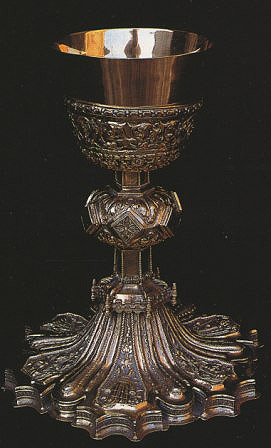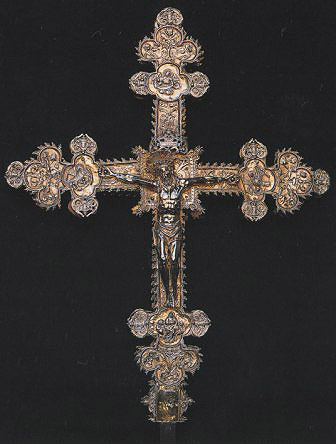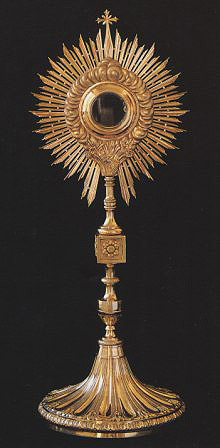September 10, 2016
About cultural heritage in the Roncal Valley
The art of silversmithing in the Roncal Valley
D. Ignacio Miguéliz Valcárlos
Chair of Navarrese Heritage and Art
Throughout the centuries, the churches of the seven towns that make up the Roncal Valley, Burgui, Garde, Isaba, Roncal, Urzainqui, Uztárroz and Vidángoz, accumulated a rich collection of silverware, product of both the orders of the parish factories themselves and the gifts of the faithful and devotees. However, from the end of the 18th century, when the War of the Convention (1794-1795) took place, and throughout the 19th century, during the War of Independence (1808-1814) and the First Carlist War (1833-1840), a large part of the rich treasures accumulated by these temples were lost. The reason was both the seizure of the silver by the government to pay war expenses, as well as the looting of these churches by the French army. In relation to this, it should not be forgotten that three of the seven localities of Roncal were sacked and burned by the invading army during the War of Independence: Burgui in 1809, Urzainqui in 1812 and Isaba in 1813.
In spite of the vicissitudes of history, the temples of the valley still conserve an important group of silver jewelry, from the workshops of Sangüesa and Pamplona, Zaragoza, Mexico and Peru. The absence of works from other peninsular centers is strange, which is undoubtedly due to the losses suffered throughout the 19th century. Among the preserved pieces, three sets of special relevance should be highlighted. Firstly, the group of five gothic chalices from Burgui, Isaba, Roncal and Urzainqui, which show marks from Pamplona and Sangüesa, dating from the first third of the 16th century. In second place the processional crosses of Roncal, Isaba and Urzainqui, also from the first half of the 16th century, in which we see the evolution from Gothic to Renaissance models. And in third place a set of Mexican silver composed by acetre, two candlesticks, baptismal shell, ciborium, monstrance, script cross and banner sent around 1823 from the town of Lerdo, in Mexico, by Fermín de Arriaga to his native parish of Uztárroz. Likewise, we cannot forget for its singularity other two conserved pieces, the reliquary of San Martin and a door of Sagrario, both in the church of Urzainqui. The first one, Gothic from the beginning of the 15th century, is the oldest piece conserved in the valley. While the second, arrived from the viceroyalty of Peru, responds to a very unusual typology within the Hispanic ecclesiastical trousseaus.

Urzainqui Chalice, 1520-1530
Juan de Ochovi
Pamplona Workshop

Processional cross of Isaba, 1553
Gaspar de León
Sangüesa Workshop

Custody of Uztárroz, c. 1820. Mexico
Agustin de Herrera
Marker Joaquín Dávila Madrid
In addition to the aforementioned pieces, there is a wide range of jewelry of other types, such as monstrances, navetas, incense burners, crucifixes, cruets, cruets, etc., which complete the furnishings of these churches. Thanks to all of them we can trace an extensive journey through the art of silverware in the valley, appreciating how the churches of Roncalesa were provided from early times with high quality pieces and how they maintained over the centuries the orders to the nearest workshops: Sangüesa, Pamplona and Zaragoza.
